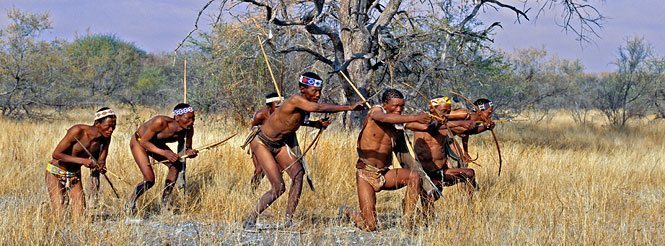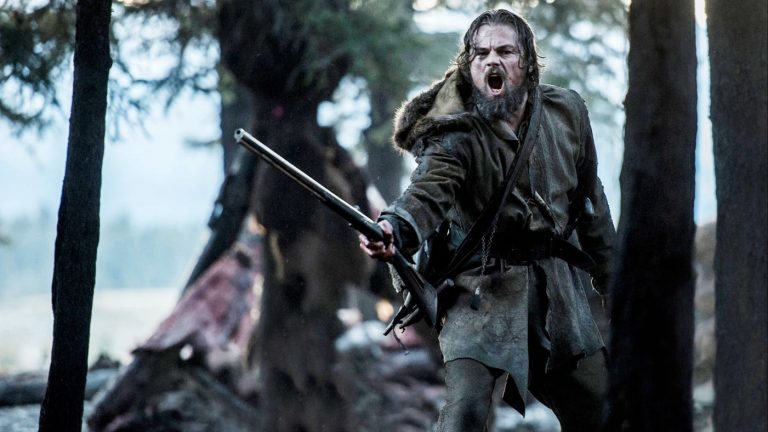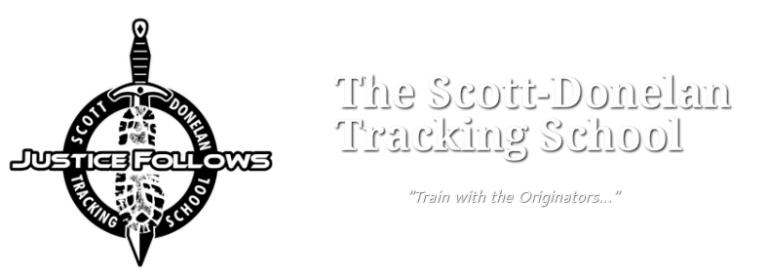There is no hunting like the hunting of man, and those who have hunted armed men long enough and liked it, never care for anything else thereafter.-Ernest Hemingway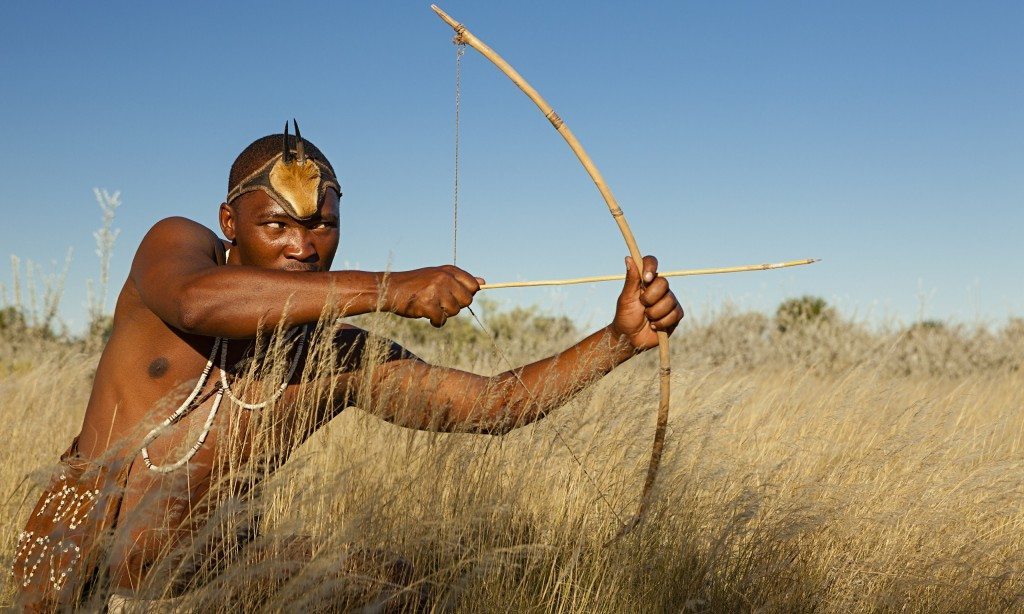
Hunting men or game takes a lot of effort and time to be any good. I claim no great expertise. I simply know that good trackers should be perceptive, intelligent, observant, capable of working autonomously or with a team, patient and yet able to move fast on their feet in order to keep up with their quarry.
In our new age of living in hardened cities and driving along modern highways few of us will ever have the opportunity or need the ability to be like our ancestors who tracked men and game. Compared with today, it appears their technology was primitive, yet their skills in comparison was advanced and unique. There are romantic notions held today by some about ancient trackers.
These modern trackers believe there are mystical tracking secrets to be learned from the ancients. They attempt to commune with nature, and believe nature releases answers on where a man or beast hides. There are varying philosophies on tracking. Some schools talk about a sixth sense, a complex bond between man and animal, whereby this relationship allows the hunter to track the hunted.
Tribesmen of the Kalahari believe they commune with the gods and nature when tracking. A good example of this is found in the movie, the Great Dance, whereby they look for their quarry just as their ancestors. Like a dance, they stalk, skin and cook their game, and reflect on their grandfather’s philosophy of communicating with God.
Is that a false notion?
The Native American people are well known for their hunting techniques, particularly bear-hunting techniques, going so far as to take on animal names such “Aditsan”, a Navajo name for a “listener” or “Chasesegra” an Osage name for, “one who tracks”. They felt by being a “true-believer” in understanding nature opened a portal to the secrets on hunting. They believed in using every part of the animal, from the skin to the bones and created legends out of their hunts, and felt this helped them understand the animals they hunted.
Throughout the ages there have been people who believed that some species of animals possessed a knowledge beyond the scope of human comprehension. For example, baboons were believed to eavesdrop on hunters and were tricksters who fouled man up from successfully hunting despite his intent and skill.
Is tracking solely evidentiary based or is it communing with the gods? Is effective tracking a commingling of both viewpoints- looking for clear indicators by use of forensics blended with an intuitive, introspective and existential outlook of the world as they stood at the center of the signs?
It’s true that modern societies’ over-reliance on cell-phone GPS systems, directional maps and well-defined roads and other paths have made some aspects of life simpler. It’s true that a misstep in a county park by most city-slickers can potentially make their life very complex and the event perilous. It’s true that if you can’t simply backtrack your own steps to your car and campsite then you won’t be able to track another man or even game in the woods for that matter because it is a more involved process.
Today some men can’t even find a Cinnabon Bakery at the mall, even if the smell of toasted bread and icing is wafting from the ovens, and some men need to stop to ask for directions when driving a car because they can’t follow signs or roads. Some couldn’t track a blood trial from the initial place of combat to where the victim fell three feet away in the kitchen.
There too is the mistaken idea that only dogs can track a scent trail. A new study demonstrates that people can follow their noses too in a way that is very similar to dogs. Men may not smell as well as dogs but unlike animals men can truly reason by use of induction and deduction. Using what they know about a spoor, animal behavior and the environment after long hours of observation gives them “insight” on how next to proceed when tracking man or animal.
In the crime thriller Manhunter an FBI profiler attempts to understand the similarities between himself and the serial killer he is tracking. The book by author Thomas Harris highlighted the long-term effects that cases have on profilers using forensics to get “into the mind” of other men. In the end it seems the tracker is superimposing his way of thinking onto the quarry, in order to predict the quarry’s behavior, because he understands what he intimately would or would not do.

Simply put, ancient man wasn’t using magic (art) but was just visualizing what it would be like to be a particular animal within a particular environment. Whether the ancient tracker could explain it in technical terms or not doesn’t change the fact he had a scientific knowledge of the spoor and the animal or man’s behavior. The tracker asked himself, “What would I do if I was that animal?” The tracker identified with the quarry in order to anticipate the animal or man’s next movements.
In his book, the Art of Tracking the Art of Science writer Louis Liebenberg writes, “The use of hunting magic helps to restore and maintain the confidence of the hunter by giving him the feeling that unseen forces are favourable to him (Lee, 1979). Even if hunting magic has no real effect, the psychological effect on the hunter’s motivation may well increase his chances of success.”
Ancient men tracked men and animals, and many revered the animal and referred to it as their spirit guide but that’s not all they did. Even Native Americans followed their quarry by looking at the signs if there weren’t any tracks; feces, damage to trees or bushes could point the way to the quarry’s location.
Lord Baden-Powell, who was a lieutenant-general in the British Army, founder of the Scout Movement and first Chief Scout of The Boy Scouts Association wrote, “One of the most important things that a Scout has to learn… is to let nothing escape his attention”.
I talked to John Hurth, a retired U.S. Army Special Forces Soldier who served with 1st Special Forces Group at Ft. Lewis, WA, and the founder of Tyr Group LLC which specializes in combat tracking. He believes good tracking is more forensics that ancients arts.
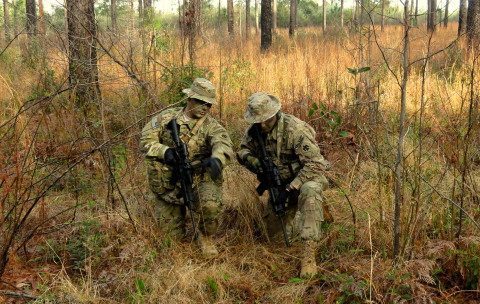
There are some tracking schools that instruct students on having a “oneness” with the trees and animals, having an intimate, heightened sensitivity and receptivity, to one’s surroundings by listening to the “song of the earth.” Whatever floats your boat but you need to question if what you are being taught actually works; does the training the instructor posits result in success? Is what you are learning in the classroom really applicable to the outdoors? The proof has to lay in outcome.
An ancient or modern tracker telling his tribe how to track game, yet coming up empty every time, is going to look foolish and be very hungry each and every time. Yet, for thousands of years our ancestors have tracked animals by looking at their prints or other signs, tracks and trails also known as the spoor. The spoor are any number of signs: the drag marks, kills, tracks, sounds, scents and any clue about the whereabouts of the quarry and its identity.
The science seems to be in the details. Yes, to interpret tracks and signs trackers must project themselves into the position of the animal in order to create a hypothetical explanation of what the animal was doing, but it looks like those who are making a good living out of tracking will tell you it is more about developing hypotheses and then putting the theory to the test. What was the animal doing when it left certain clues? What predictions could be made about what it would do next?
Can the symbols, those tracks, be understood by reading them like an alphabet?
The movie-machine called Hollywood, and its foreign counterparts, create movies about hunters and trackers that are often times very entertaining. Behind Enemy Lines with Owen Wilson did well at the box-office. In that movie, Wilson stars as a Navy pilot who is shot down over war-torn Bosnian territory. Injured and using his military SERE training, he struggles to outwit and outpace hostile troops, a ruthless secret police enforcer, and lastly a deadly tracker.
Decades ago it was the movie the Hunted with Benecio Del Toro, or the Trackers with Kris Kristofferson. Who hasn’t enjoyed watching reruns of the movie Jerimiah Johnson with Robert Redford in the starring role as a mountain man and tracker? The Revenant movie with Leonardo DiCaprio in the starring role is the most recent to come to cinema and it won a few Oscar awards. DiCaprio played the frontiersman Hugh Glass who is hell-bent on tracking down the trapper that killed his son.
These men, so common in the North American Rocky Mountains from about 1810 through the 1880s, were instrumental in opening up trails to the immigrants that soon followed the pathways in order to settle the West. Many of them were ex-soldiers, capable Army Scouts, Indian fighters, and settlers who loved the rough outdoors. Mule and wagon trains relying on wagon roads still needed to harness the skills of the tracker and trappers because death hovered around every cliff, mountain and canyon.
Today it appears that only those who are exposed to high risk activities need to know the fundamental components of tracking. Mantracking, small unit tactics and survival and evasion training are just some of the things being taught to Army Special Forces, MARSOC, EOD, and Navy Special Warfare communities but I don’t believe it’s just our modern warfighters that should be in need of the best training. Some commanders deride the skill of tracking. In Vietnam combat trackers were used to “walk point” even though the combat tracker knew the value of tracking.
There are a lot of reasons for knowing how to track. What we did thousands of years ago as primitive folk is just as applicable today-finding the lost, retracing our steps if we are lost, tracking criminals or the enemy, or even for scouting and gathering intelligence. Do you think the Taliban are using GPS systems and helicopters to track down our troops to kill them? Do you think they are using remote sensing devices such as film photography and radiometers to find where our Marines and soldiers are in order to kill them?
Imagine if each of our non-Special Operations members had a bit of tracking experience and shared that knowledge with the rest of their platoon or company. Imagine if the Army teams looking for U.S. deserters like Bowe Bergdahl were trained in tracking.
Could this training be an added value in spotting IEDs or using their intelligence to find an enemy known for hiding in the mountains and forests? So too should U.S. Marshals, Border Patrol and the average man with any interest in survival know that tracking isn’t just an ancient art that is long forgotten; a bit of knowledge on tracking and counter-tracking it can be used to save lives.
Tom Brown Jr.’s Tracker School is very successful. He has authored 16 books on tracking. He teaches tracking, nature observation, and awareness. Some of his books are titled Grandfather, The Vision, The Way of the Scout and have sold over 1 million copies. Brown was the technical advisor for the movie the Hunted.
Worldwide, one of the most respected trackers is David Scott-Donelan. He served with the Rhodesian SAS Special Forces and is author of the most used tactical tracking handbook in the world: Tracking Operations-The Essential Guide for Military and Police Trackers. His view on tracking is forensic based.
Whether you want to keep or get the romantic notion out of your head about what tracking is or is not, it is prudent to look at the results the school and instructor produce. Are they able to reproduce what they teach in class? Is the instructor capable when it comes to tracking down abducted children, lost hunters and hikers, fugitives or ISIS or Taliban?
Anyone interested in the latest military practices and survival skills should look into taking a course on the art and science of observing signs all with the goal of gaining an understanding of the landscape and the intended being that is pursued. One other goal is to gain a deeper understanding of the environment and the patterns and systems around being a tracker.
Today modern technology is working daily to create a system that automatically detects and tracks multiple individuals in a crowd. Scientists are creating hand-held electronic devices that utilize a technology that can become common for anyone to have access to. Old school tracking methods when combined with technology enhances force protection and lethality. To be most successful trackers must learn the basics before they become masters. It simply starts with a desire to explain the clues they find through observation and having a desire to learn.
Brown, T. (1983) Tom Brown’s Field Guide to Nature Observation and Tracking. New York: Berkley Books
Brown, T. (1999) The Science and Art of Tracking. New York: Berkley Books
Carruthers, P. (2002) The roots of scientific reasoning: infancy, modularity and the art of tracking, In: Carruthers, P., Stich, S., Siegal, M., (Eds.), The Cognitive Basis of Science. Cambridge: Cambridge University Press.
Carruthers, P. (2006) The Architecture of the Mind. Oxford: Oxford University Press.
Carss, B. (2000) The SAS Guide to Tracking (SAS), Boston: The Lyons Press.
Conesa-Sevilla, J. (2008). Thinking in Animal Signs: Tracking as a Biosemiotic Exercise, Ecopsychological Practice, and a Transpersonal Path. The Trumpeter, 24, 1, pp. 116–125.
Taylor, A. and Cooper, D. (1992) Fundamentals of Mantracking, the Step-by-Step Method, Emergency Response Inst.
Diaz, David (2005) Tracking—Signs of Man, Signs of Hope: A Systematic Approach to the Art and Science of Tracking Humans, Boston: The Lyons Press.
Donelan, D.S. (1998) Tactical Tracking Operations, Boulder: Paladin Press.
Elbroch, M. (2003) Mammal Tracks & Sign: A Guide to North American Species Mechanicsburg: Stackpole Books.
Halfpenny, J. (1986) A Field Guide to Mammal Tracking. Boulder: Johnson Books.
Kearney, J. (1999) Tracking : A Blueprint for Learning How. Pathway Printing.
Liebenberg, L.W. (1990) The Art of Tracking: The Origin of Science. Cape Town: David Philip.
Liebenberg, L.W. (2006) Persistence hunting by modern hunter-gatherers. Curr. Anthropol. 47, 1017-1025.
Murie, O. & Elbroch, M. (2005) Peterson Field Guide to Animal Tracks. New York: Houghton Mifflin.
Pickering, T.R., Bunn, H.T. (2007) The endurance running hypothesis and hunting and scavenging in savanna-woodlands. J. Hum. Evol. 53, 434-438.
Rezendes, P. (1992) Tracking & the Art of Seeing. Vermont: Camden House Publishing.
Hardin, J. (2005) Tracker: Case Files & Adventures of a Professional Mantracker.
Ruggiero, Leonard F.; Aubrey, Keith B.; Buskirk, Steven W.; Lyon, L. Jack; Zeilinski, William J., tech. eds. 1994. The Scientific Basis for Conserving Forest Carnivores: American Marten, Fisher, Lynx, and Wolverine in the Western United States. Gen. Tech. Rep. RM-254. Ft. Collins, CO: U.S Department of Agriculture, Forest Service, Rocky Mountain Forest and Range Experiment Station.
Young, Jon (2007) Animal Tracking Basics. Mechanicsburg: Stackpole Books.
http://www.snowwowl.com/swolfNAnamesandmeanings2.html
pic from Donelon’s site
pic from Tom Brown’s site
pic from TYR Group LLC
pic from the Third Way film
pic form Bam.com tooth fairy
pic animaltracksic.org


